Marine Science
Microbial communities have a seasonal shake-up
Turbulence and nutrient availability drive changes in Red Sea microbes.
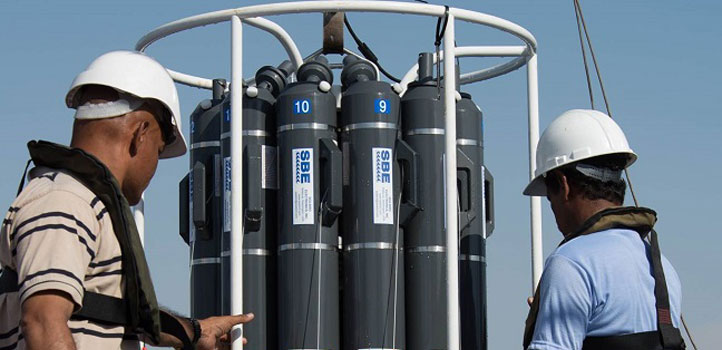
KAUST researcher measure abundance of phytoplankton across the Red Sea to find variations between North and South and with changes of season.
© 2018 KAUST
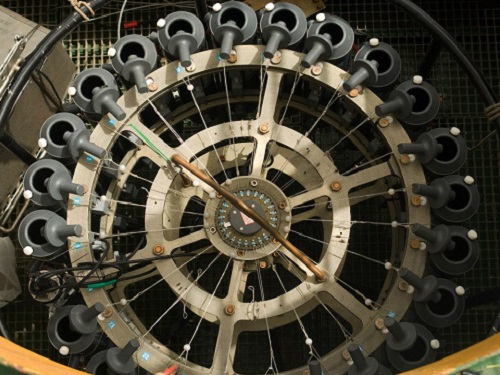
At specific depths, bottles of the CTD rosette are closed and water is collected for the analysis of microbial communities and potential explanatory variables (e.g. nutrient concentrations).
© 2017 KAUST
Seasonal changes in turbulence and nutrient availability are shown to shape microbial communities in the Red Sea. “A lot of the marine ecosystem is ultimately based on how microbes live and what they’re doing,” explains research scientist John Pearman, lead author. “Knowing how microbes respond is important to understand how the ecosystem is going to function.”
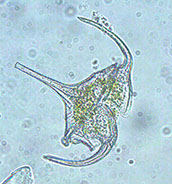
Phytoplankton under microscopy: the microbial community underpins marine food webs, chemical cycling and carbon fixation.
© Joao Curdia
Using a CTD rosette sampler that combined sampling bottles with sensors for water temperature and conductivity, researchers in the Saudi Aramco-KAUST Center for Marine Environmental Observations measured water conditions and collected samples for the analysis of planktonic microbial communities in various parts of the Red Sea in different seasons. Sequencing rRNA genes from these samples gave them snapshots tracking how communities changed over time.
Led by marine scientists Susana Carvalho and Burton Jones, the research team found overall that diversity was greatest in the Southern Red Sea and lowest in the central region. However, communities varied across all regions and seasonally in both the North and the South.
The Southern Red Sea had the lowest diversity during the fall, when high nutrient availability provided enough energy for larger plankton to grow, while low levels of turbulence minimized interactions with predators. As a result, these groups were able to dominate communities, diluting their richness.
In the spring, higher turbulence levels made it easier for predatory zooplankton to find their prey and keep them in check, increasing the communities’ diversity.
In the Northern Red Sea, nutrient levels remain lower throughout the year, but seasonal changes in turbulence altered the composition and structure of microbial communities, although the changes were smaller than in the South.
These findings support a 15-year-old model linking community structure with physical factors, such as turbulence and nutrient levels. “The original study was based on phytoplankton communities, but we were able to target the whole microbial community through sequencing and show that the original theory is applicable to the whole planktonic community,” says Pearman.
Despite the new support, the model remains a work in progress, with researchers incorporating the effects of additional factors, such as currents, as new data become available.
“A lot is still unknown about the marine microbial environment although they’re actually the basis of food webs, chemical cycling and carbon fixation,” says Pearman. “It’s extremely important to know how the microbial community responds to differences in temperature, nutrients and turbulence especially in light of climate change or the anthropogenic nutrient enrichment due to the development of coastal regions.”
The team plans to continue refining its understanding by studying microbial communities along the latitudinal axis of the Red Sea, further from coastal influences, as well as incorporating the effect of circulation in their models.
References
- Pearman, J.K., Ellis, J., Irigoien, X., Sarma, Y.V.B., Jones, B.H. & Carvalho, S. Microbial planktonic communities in the Red Sea: high levels of spatial and temporal variability shaped by nutrient availability and turbulence. Scientific Reports 7, 6611 (2017).| article
You might also like
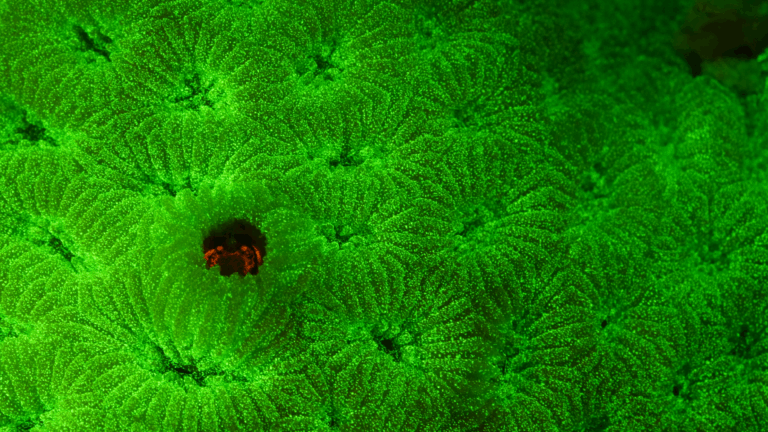
Marine Science
Tiny crabs glow to stay hidden

Marine Science
Mass fish deaths linked to extreme marine heatwave in Red Sea

Marine Science
Weeding out the secrets of Red Sea macroalgae

Bioscience
Digging into the world of plant-growth-promoting microbes
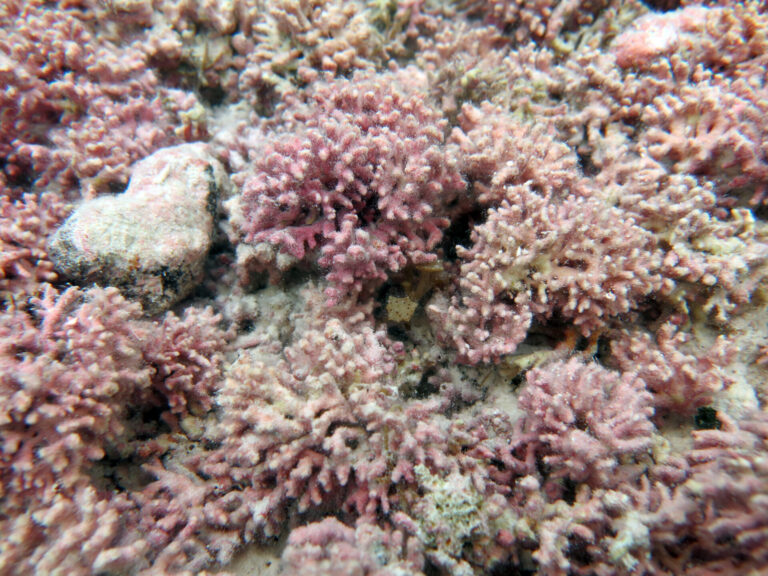
Marine Science
Rhodoliths found in a surprise location

Bioscience
Unique microbiome discovered in mountain streams
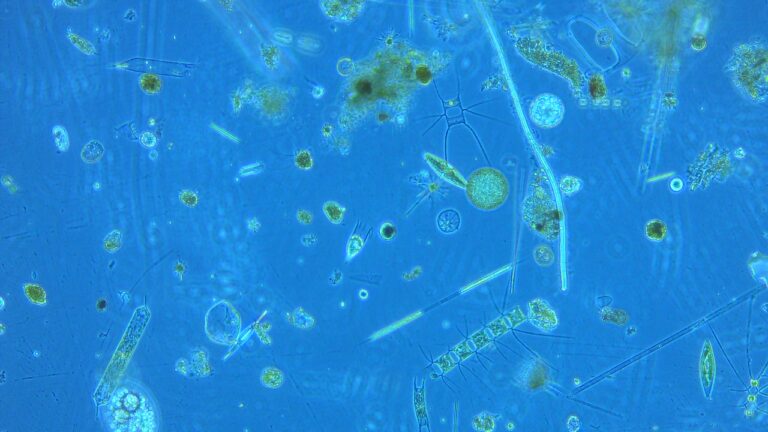
Marine Science
Examining phytoplankton’s past to reduce future algal blooms

Marine Science




